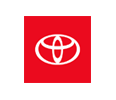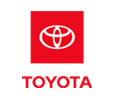Why does tire rotation and wheel alignment matter?
Understanding the importance of tire alignment and rotation is crucial for maintaining optimal vehicle performance, handling and tire lifespan. At Panama City Toyota, we provide a detailed examination and necessary adjustments of your vehicle’s tires in specific patterns, including side-to-side and front-to-back exchanges. This routine maintenance is essential for early detection of potential damage, as well as to check air pressure and tread depth.
Our Toyota dealer in Panama City is ready to assist with all your tire needs, but until then, read on to learn all about the importances of these services and how they help the longevity of your RAV4 or Camry.

The Importance of Frequent Tire Services
It's advised to have tire alignment and rotation performed when you fit new tires or notice signs of uneven wheel wear. Regular alignments and rotations help ensure your tires achieve maximum longevity and even wear, optimizing road safety and vehicle performance. While there is no set duration for keeping your tires aligned, ongoing inspections are essential, especially for those who regularly navigate uneven terrains around Panama City. It's worth noting that tire alignment differs from wheel and tire balancing, which focuses on correcting weight imbalances within the tire and wheel assembly.

Causes and Signs of Tire Misalignment
Several factors can lead to tire misalignment. Uneven tire wear, for instance, may suggest misalignment if one side of the tire wears out faster than the other. Other indicators include:
- Steering Pull: This occurs when the vehicle inadvertently veers due to uneven road surfaces or differences in tire wear or pressure.
- Vibrations: Typically points to out-of-balance tires rather than alignment issues.
- Off-Center Steering Wheel: This may indicate worn steering or suspension components, which a thorough check at a dealership can diagnose.
Optimal Tire Rotation Patterns
Each vehicle type has its specific tire rotation and alignment needs, which are determined by factors such as tire size and vehicle drivetrain. Rotation patterns vary, including:
- X-pattern: Ideal for front-wheel-drive vehicles, involves crisscrossing tires between axles.
- Rearward cross and Forward cross: Suitable for all-wheel and rear-wheel drives, these patterns involve moving tires between the front and rear axles in specified formats.
- Directional and High-Performance Tires: These tires require more distinct rotation strategies, such as moving tires from one axle to another without changing sides.

Schedule Tire Service with Panama City Toyota
Regular tire rotation is key to maintaining even tread wear, which ensures reliable handling and traction across all wheels. At Panama City Toyota, our expert Toyota service technicians are ready to assist you with comprehensive tire alignment and rotation services.
Using state-of-the-art equipment, we ensure your vehicle achieves and maintains peak performance. Schedule tire service today and start experiencing smoother, safer drives.
READ MORE: The Importance of Routine Auto Maintenance


